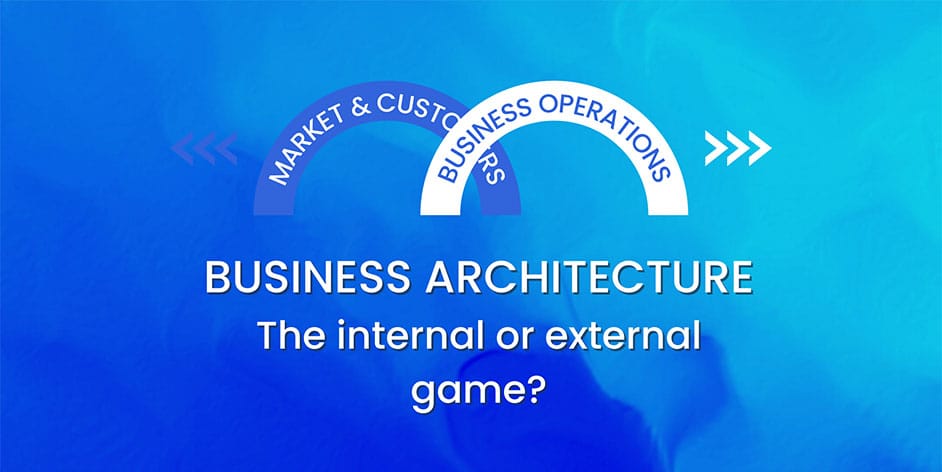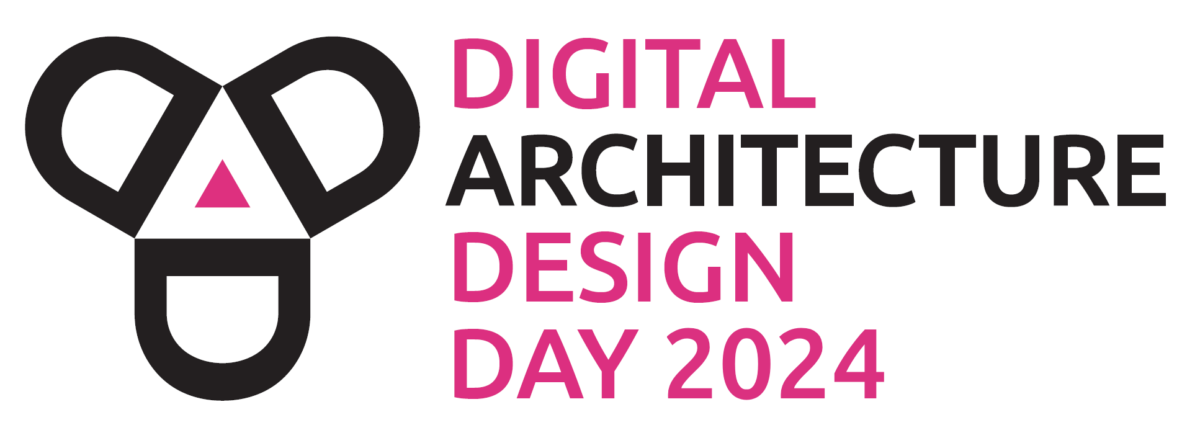Business Architecture – the internal or the external game?
Business Architecture (BA) is typically referred-to as one of the architecture disciplines, the “business-side” of enterprise architecture (EA).
Where enterprise architects primarily focus the entire organisation at a more holistic level (the “whole”), bridging concepts to planning, the business architect primarily focus on the business-side of EA. Where Enterprise Architecture is the holistic view of strategic planning, optimisation of systems, and optimisation of technologies through the investment processes and structured governance, Business Architecture is a key component, as the purpose of any digital effort relates back to the purpose of the business and the target states to achieve, strategically or tactically.
Clearly, the concerns of stakeholders of business operations will be around tactical demands, strategic changes of the business, where architectural input is needed to structure development around offerings to attract the market.
Now, in this effort, we typically see two different perspectives of how to solve this in practice. One is externally focused, outside-in. The other is internally focused, inside-out. They are both motivated, although though the deliverables will become different.
Outside-In:
In the externally focused BA-work, focus is on the market and the purpose of the business operations. This is where the market is analysed and described, so it becomes clear where to invest more. This we do not see from a capability map. A capability map will articulate where in the business we should put more effort, but it does not map to the market. In the externally focused BA-work, we address the markets, segments, type of customers that adopt the offerings of the business.
The role of the business architect is to act in the outer game to support the purpose of the business with tactical and strategic input to succeed in the market. It is with reference to Porter’s work, SWOT and analyses the business architect provides a business lens to the EA artefacts and secure in dialog with stakeholders the alignment of strategic and tactical initiatives and demands.
Inside-Out:
In the Internally focused BA-work, focus is on the “where” in our value streams, or business capabilities or business processes do we find the tactical initiatives and demands; essentially with the main purpose to tackle the alignment between plans and change, do we see enough and the correct prioritization; then to align on the tactical and strategic initiatives.
In other words, the business architect in the internal game, will be focused mostly on capability maps and value streams, eventually via business process maps, as these models are more conceptual and easier to communicate within the business, but it implies a change in the offerings and market, but is somehow deducted and more implicit than to win the outer game.
As many businesses still struggle to articulate a common language to the business architecture, the main effort in starting the EA-work of the business, often boils down to get a common language of terms and metadata to use, like to identify the stakeholders, offerings, offering models or product groups, business capabilities and business capability maps, not to mention value streams and value stream steps, that will connect nicely to capabilities and internal business processes. Much of this is largely seen as EA-work, but the dialog, the alignment and consistent focus on getting this information right in tight alignment with many stakeholders of different parts of the business, is largely seen as provided by business architects.
Whether BA-work starts outside-in or inside-out is largely a stakeholder and time-consideration, but to some degree also a cultural consideration. Eventually, the EA repository should be alive with fresh relationships that help BA’s drive alignment to the demands and initiative process with business management; but equally, it also ties into the core of change, whether changes happen through people and skills, or through market analysis and planning. Both routes will target better alignment, better alignment between the business operations and the business purpose, tactically as strategically. This input is the major source of input to successful investment planning and digital planning.
To make a strategy executable, we need to decompose it into the inner game and the outer game. These terms are re-used from leadership schools. These two games represent two different perspectives that will supplement or compete the alignment of business architecture. The Outer Games is by definition the external perspective of ‘what is possible’. The Inner Game has a focus on the existing organization and competencies, hence ‘what can we do better’.
Enterprise Architecture is often described as four overall processes, where the digital planning of initiatives is the core engine catalyzed by the strategic, business and systems/technology alignment. Or put in context, there would not be the business alignment of EA initiatives, if there was not any BA’s on the team.
Digital transformation (as when transforming the business from one set of offerings to another one) is clearly best solved with an Outside-in perspective, whereas digitalization (where the processes are the same, just done smarter) very often is best provided using an inside-out perspectives.
Finally, two games are related like strategy to culture, like Yin to Yang, like innovation to operations. They cannot live without each other, but they also represent opposite purposes. The purpose of the outer game is to follow principles of the Porter school, how to create a future into the market. As opposed to this, the inner game focuses on what can we operate, what can we do better, to fit with our capacity, our skills our collective win.
–
We help organisations to align long-term planning with short-term planning; check out next-insight if you look for a modern SaaS tool that can do the job. Business Architecture work and Enterprise Architecture work are easily supported in a cloud-native solution, next-insight . We provide advisory and solutions to business architecture and enterprise architecture. As a advisory and consulting house with senior profiles in digital planning and enterprise architecture, we can offer cutting edge technology to accelerate your work with value creation from business architecture management!



